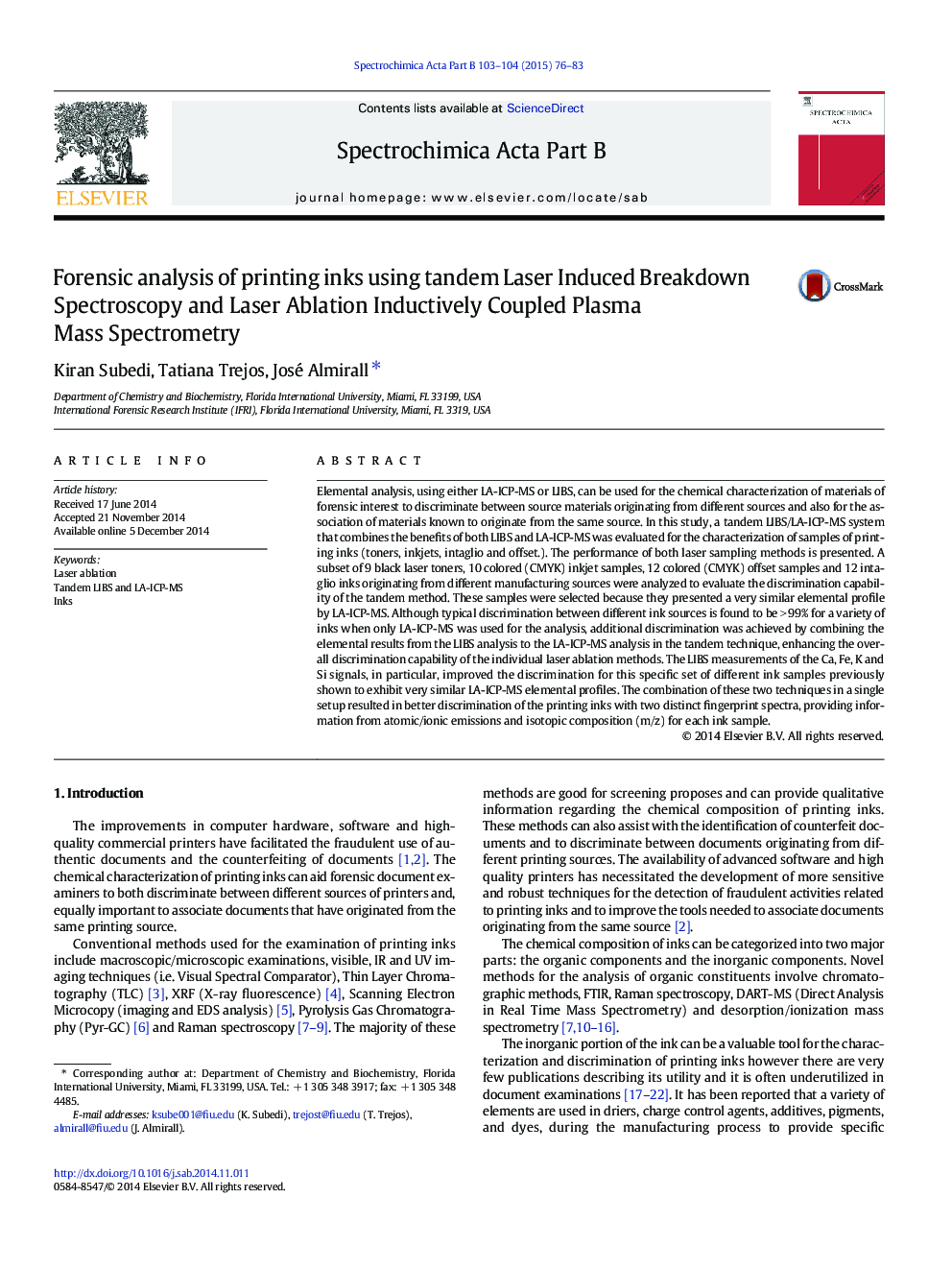| Article ID | Journal | Published Year | Pages | File Type |
|---|---|---|---|---|
| 1240134 | Spectrochimica Acta Part B: Atomic Spectroscopy | 2015 | 8 Pages |
•The optimization of the parameters for LA-ICP-MS and LIBS in a tandem experiment are presented.•The analytical figures of merit for the tandem experiment for data collected simultaneously, are presented.•A qualitative and semi-quantitative method for the analysis of toner, inkjet, offset and Intaglio inks is presented.•The LIBS and LA-ICP-MS data are shown to be complementary and can augment discrimination over a single technique.•Major, minor and trace elements present in ink samples can serve as good discriminators for a variety of printing inks.•LIBS was successful to overcome spectral interferences of ICP-MS for some discriminating elements like K, Ca, Si and Fe.•Fusion of LIBS and LA-ICP-MS has proven to provide complementary information and enhanced discrimination for printing inks.
Elemental analysis, using either LA-ICP-MS or LIBS, can be used for the chemical characterization of materials of forensic interest to discriminate between source materials originating from different sources and also for the association of materials known to originate from the same source. In this study, a tandem LIBS/LA-ICP-MS system that combines the benefits of both LIBS and LA-ICP-MS was evaluated for the characterization of samples of printing inks (toners, inkjets, intaglio and offset.). The performance of both laser sampling methods is presented. A subset of 9 black laser toners, 10 colored (CMYK) inkjet samples, 12 colored (CMYK) offset samples and 12 intaglio inks originating from different manufacturing sources were analyzed to evaluate the discrimination capability of the tandem method. These samples were selected because they presented a very similar elemental profile by LA-ICP-MS. Although typical discrimination between different ink sources is found to be > 99% for a variety of inks when only LA-ICP-MS was used for the analysis, additional discrimination was achieved by combining the elemental results from the LIBS analysis to the LA-ICP-MS analysis in the tandem technique, enhancing the overall discrimination capability of the individual laser ablation methods. The LIBS measurements of the Ca, Fe, K and Si signals, in particular, improved the discrimination for this specific set of different ink samples previously shown to exhibit very similar LA-ICP-MS elemental profiles. The combination of these two techniques in a single setup resulted in better discrimination of the printing inks with two distinct fingerprint spectra, providing information from atomic/ionic emissions and isotopic composition (m/z) for each ink sample.
